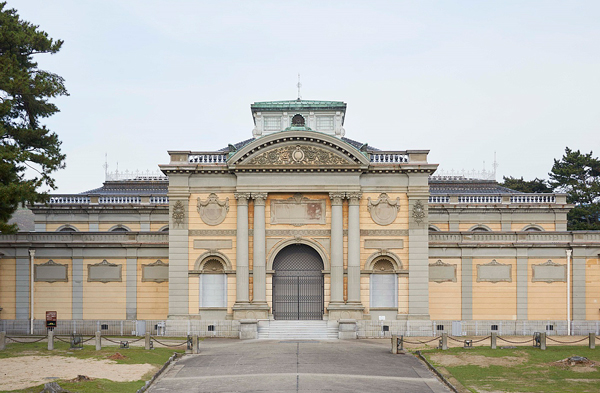Introduction
Nestled in the picturesque Nara Park, the Nara National Museum stands as a beacon of Japanese Buddhist art. Established in 1889, this museum seamlessly blends history with modernity, featuring an original building connected to a new wing via an underground passage. Whether you’re an art enthusiast or a history buff, the Nara National Museum offers a visual feast that transcends time.
Key Information
- Location: Within Nara Park
- Established: 1889
- Main Exhibits: Japanese Buddhist art
- Exhibition Types: Permanent and temporary
- Language Support: English explanations throughout
Rich History
The Nara National Museum has been a witness to the development of modern museology in Japan. As one of the earliest national museums established in the country, it not only preserves a vast collection of precious Buddhist artworks but also serves as a crucial vessel for Japanese cultural heritage. From the Meiji period to the present day, this museum has been dedicated to collecting, researching, and displaying Japanese Buddhist art, presenting the unique charm of Japanese culture to the world.
Main Attractions
Original Building
The original building is the iconic structure of the Nara National Museum and an outstanding example of Western-style architecture from Japan’s Meiji period. Designed by renowned architect Katayama Tōkuma and completed in 1894, this French Renaissance-style building showcases an elegant fusion of Eastern and Western architectural artistry. As you step into this century-old edifice, you’re transported back in time, experiencing Japan’s enthusiastic embrace of Western culture in the late 19th century. The original building primarily houses the permanent exhibition, featuring a curated selection of Buddhist sculptures, paintings, and crafts, each piece narrating the evolution of Japanese Buddhist art.
New Wing
The new wing, completed in 2016, is a modern exhibition space designed by the famous architect Yoshio Taniguchi. This structure, incorporating extensive use of glass and metal, creates a bright, open exhibition environment that contrasts strikingly with the ancient artworks. The new wing not only expanded the museum’s exhibition area but also introduced advanced display technologies and conservation measures, providing optimal conditions for showcasing and protecting precious artifacts. It primarily hosts various temporary exhibitions, with the most popular being the annual autumn exhibition of Todaiji Temple treasures, attracting numerous domestic and international visitors. The design of the new wing cleverly integrates with the surrounding natural environment, allowing visitors to enjoy panoramic views of Nara Park through large floor-to-ceiling windows while appreciating the artworks.
Buddhist Art Treasures
The Nara National Museum houses an extensive collection of precious Buddhist artworks, spanning various historical periods from the Asuka to the Edo era. Among the most striking are the lifelike Buddhist sculptures, such as the national treasure-class wooden statue of Kannon Bodhisattva and the gilt bronze Amida Buddha, whose exquisite craftsmanship and profound spiritual connotations are awe-inspiring. Additionally, the museum boasts a rich collection of paintings, including vibrant Buddhist paintings and intricate picture scrolls. These works not only demonstrate superior artistic techniques but also reflect the evolution of Japanese Buddhist art. Notably, the museum also houses a vast array of Buddhist ceremonial objects, such as ornate incense burners and delicate ritual implements, providing valuable material evidence for understanding Japanese Buddhist rituals and culture.
Best Time to Visit
- Spring (March-May): Cherry blossoms in full bloom, beautiful scenery
- Autumn (September-November): Todaiji Temple Treasures Exhibition, richest display of artifacts
- Winter (December-February): Fewer visitors, allowing for quiet contemplation of exhibits
Transportation Guide
- From Kintetsu Nara Station: About 15 minutes on foot
- From JR Nara Station: About 30 minutes on foot
- Bus Option: Take a bus from either station and get off at “Himuro Shrine/National Museum” stop
Opening Hours and Admission
- Hours: 9:30 AM – 5:00 PM (last entry at 4:30 PM)
- Closed: Mondays (or Tuesday if Monday is a national holiday), December 28 to January 1
- Admission: 700 yen (includes access to both wings of the museum)
Visitor Tips
- Check the official website for temporary exhibition information in advance to plan your visit
- Utilize the provided English explanations for in-depth understanding of the exhibits
- After your visit, take a stroll in nearby Nara Park to soak in the atmosphere of the ancient capital
- For photography enthusiasts: Note that some exhibits may prohibit photography, please follow the rules
Official Website
Conclusion
The Nara National Museum is an ideal destination for exploring Japanese Buddhist art. Whether you’re admiring exquisite Buddha statues or immersing yourself in ancient paintings, this museum offers an unforgettable cultural journey. Step into the Nara National Museum and travel through time to experience the eternal charm of Japanese art. Don’t miss this opportunity to personally experience the essence of Japanese culture. Plan your trip to Nara and make the Nara National Museum a must-visit destination on your itinerary!
